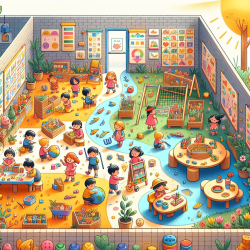The early years of a child's education are foundational, setting the stage for lifelong learning. In Kindergarten, the learning environment plays a pivotal role in nurturing children's natural curiosity and fostering their love for discovery. By thoughtfully designing both indoor and outdoor spaces, educators can create environments where complex, rich play thrives, enabling children to explore, inquire, and learn.
The Guiding Principles of the Kindergarten Environment
A successful Kindergarten environment is one where children feel welcomed and inspired to engage in play that supports their development. It is an inviting space where both children and adults can inquire, learn, and co-construct knowledge together.
- Physical Environment: The classroom should be rich with opportunities for explorative play. This includes areas for dramatic play, block building, painting, drawing, and writing. Such an environment reflects the diversity of the children and their communities.
- Social Environment: The social climate should promote positive interactions among peers and with teachers. Encouraging sustained peer interactions in a nurturing setting helps develop social skills critical for school success.
- Organizational Qualities: A well-organized schedule that includes ample time for child-directed play is essential. Teachers should minimize transitions to allow children deep engagement in their activities.
Designing a Multi-Sensory Learning Experience
Teachers play a crucial role in creating environments that support emergent literacy and numeracy by recognizing different learning styles. Children benefit from opportunities to represent their ideas through various forms of expression. Whether through dramatic play or building with blocks, these activities help children develop essential skills.
A multi-sensory environment not only caters to diverse learning styles but also encourages children to explore their interests. Outdoor play is highly valued for its potential to support the highest levels of development in young learners.
The Importance of Flexibility in Scheduling
A flexible schedule that responds to children's changing needs allows a developmentally appropriate curriculum to emerge naturally over time. This includes at least one hour of child-directed play daily to ensure engaging experiences that foster deep learning.
Teachers should be prepared to adjust schedules as needed, allowing productive play to continue longer when beneficial. Reducing transitions helps maintain children's focus and supports sustained engagement in inquiry-based learning.
Four Dimensions of the Learning Environment
- Temporal (Time): Managing time effectively within the classroom ensures that children have opportunities for both structured activities and free exploration.
- Space: The physical layout of the classroom should accommodate various activities, from quiet reading corners to lively group projects.
- Things: Resources like toys, books, learning centers, and props are essential for stimulating children's imagination and supporting diverse learning experiences.
- People: Interactions with peers and adults form the social fabric of the classroom community, fostering a sense of belonging and collaboration.
A well-designed Kindergarten environment reflects the values of educators and supports children's growth by providing them with opportunities for wonder, mystery, and discovery. For more information on designing enriching learning environments for young children, please follow this link.










